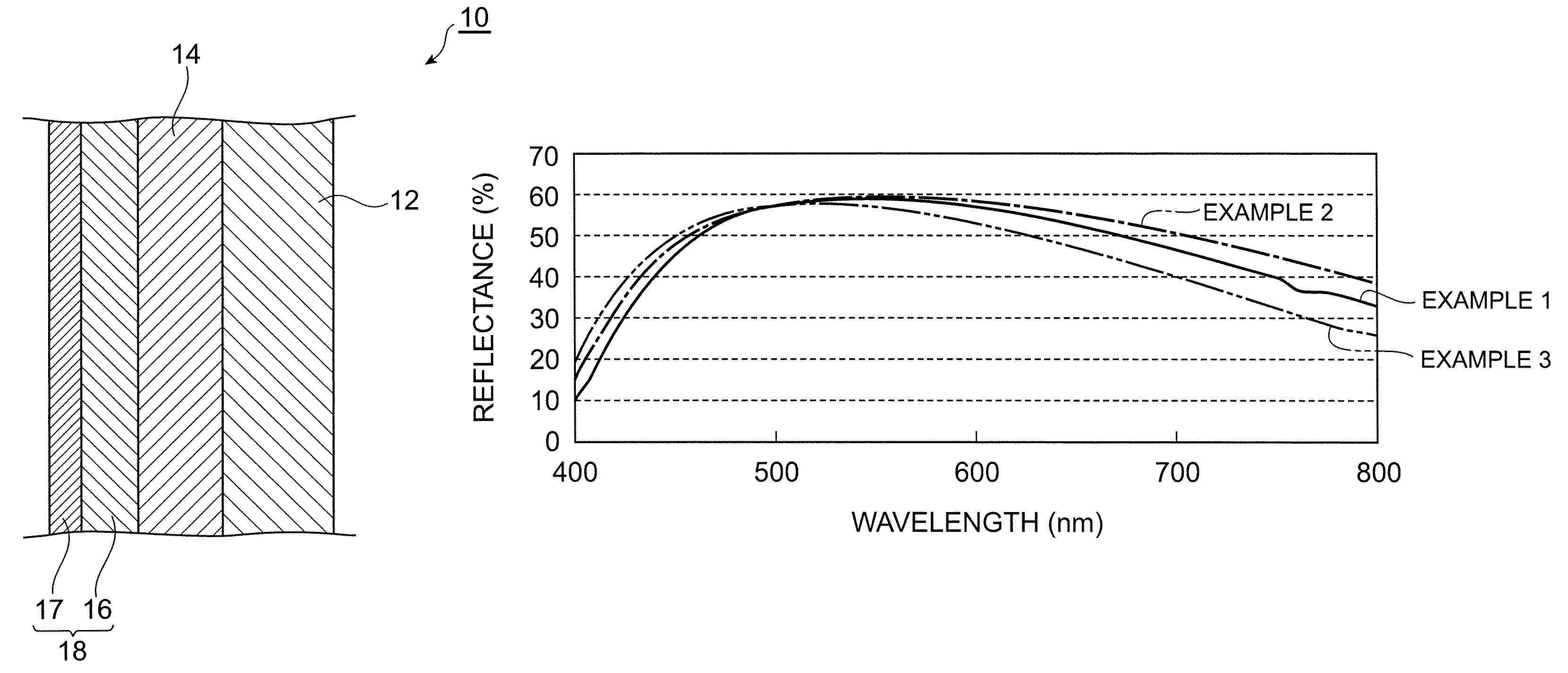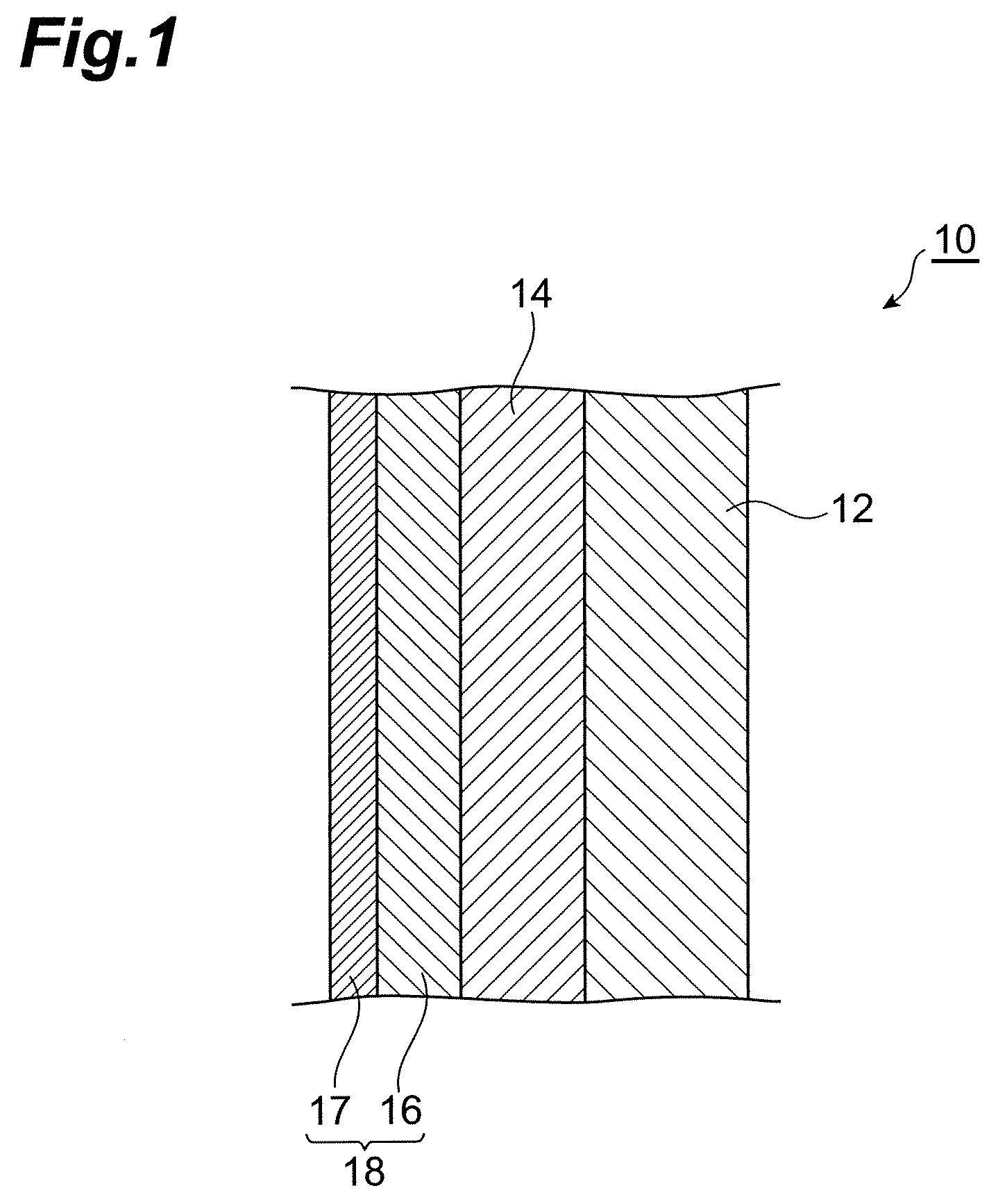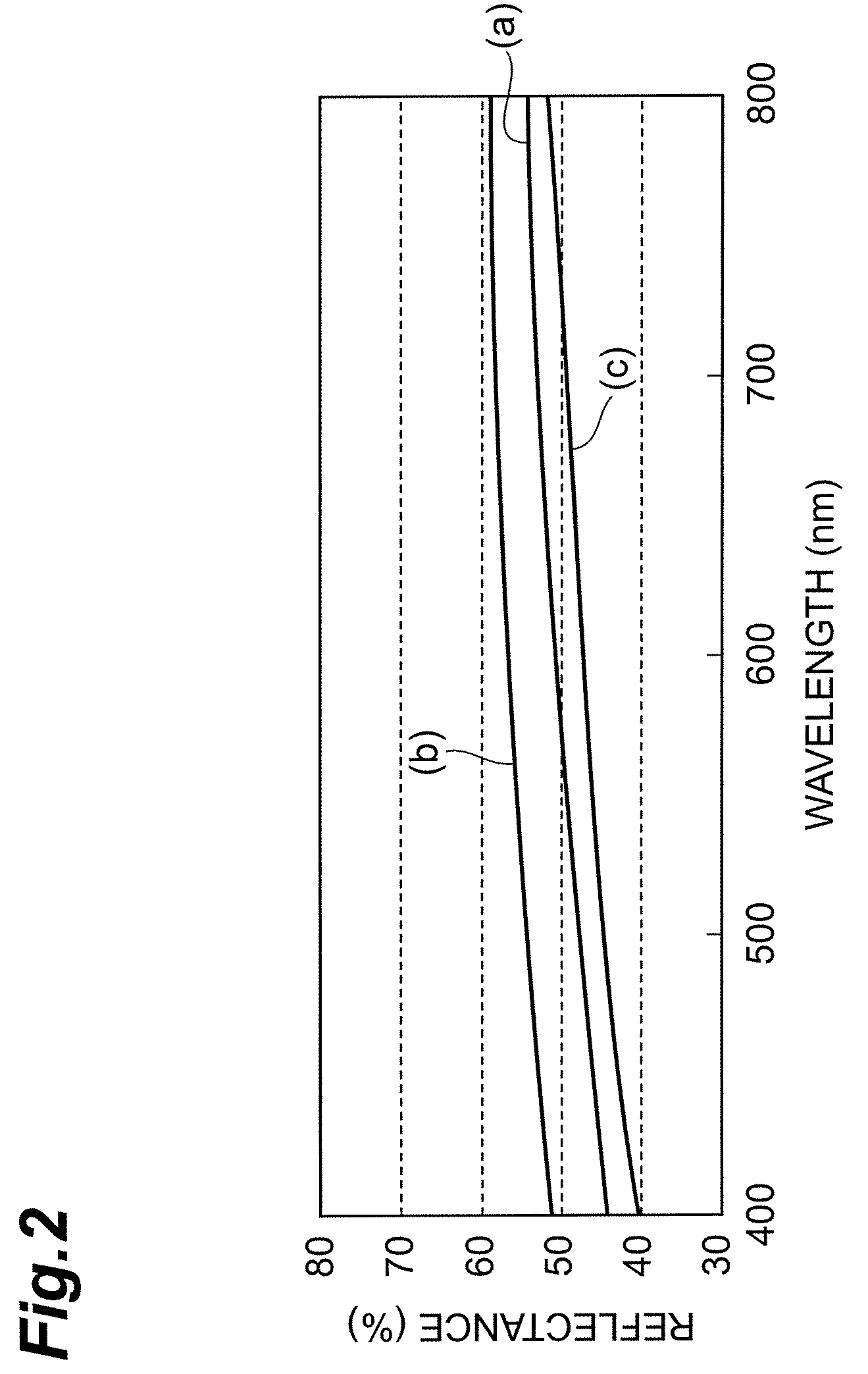Colored anti-fog mirror
a mirror and color technology, applied in the field of colored anti-fog mirrors, can solve the problems of not being able to achieve the above object, not being able to secure adequate visibility, and not having the same spectral reflection spectrum of light from a metallic reflecting film and reflected light from the colored anti-fog mirrors, etc., to achieve excellent visibility, reduce the contrast of reflected image, and suppress excessively high reflectance
- Summary
- Abstract
- Description
- Claims
- Application Information
AI Technical Summary
Benefits of technology
Problems solved by technology
Method used
Image
Examples
example 1
[0064]First, a film made of titanium was formed as a metallic reflecting film by sputtering to a thickness of 60 nm on a surface of a glass substrate. Next, a film made of titanium dioxide was provided as a photocatalytic film by vacuum deposition to a thickness of 85 nm on the surface of the metallic reflecting film. A film made of silicon dioxide was then formed as a hydrophilic film to a thickness of 20 nm on the surface of the photocatalytic film, thus obtaining a colored anti-fog mirror having a structure as in FIG. 1.
examples 2 to 10
[0065]Colored anti-fog mirrors of examples 2 to 10 were obtained as in example 1, except that the material of the metallic reflecting film was changed from titanium to niobium, stainless steel, nickel, palladium, silver, platinum, aluminum, chromium, or molybdenum respectively. Here, the thickness of the metallic reflecting film and the thickness of the photocatalytic film were changed as shown in Table 1 below.
examples 11 to 22
[0066]Colored anti-fog mirrors of examples 11 to 14, examples 15 to 18, and examples 19 to 22 were obtained as in examples 1, 2, and 3 respectively, except that the thickness of the metallic reflecting film made respectively of titanium, niobium, or stainless steel in examples 1, 2, and 3 was varied.
PUM
 Login to View More
Login to View More Abstract
Description
Claims
Application Information
 Login to View More
Login to View More - R&D
- Intellectual Property
- Life Sciences
- Materials
- Tech Scout
- Unparalleled Data Quality
- Higher Quality Content
- 60% Fewer Hallucinations
Browse by: Latest US Patents, China's latest patents, Technical Efficacy Thesaurus, Application Domain, Technology Topic, Popular Technical Reports.
© 2025 PatSnap. All rights reserved.Legal|Privacy policy|Modern Slavery Act Transparency Statement|Sitemap|About US| Contact US: help@patsnap.com



